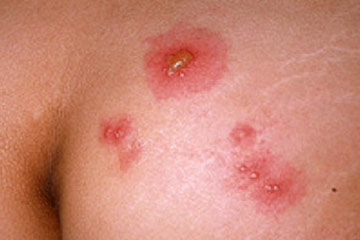Cone Biopsy of the Cervix
What is a Cone Biopsy?
A cone biopsy is a surgical procedure that involves the removal of a cone shaped portion of the cervix for diagnostic purposes.
The cervix is the lower portion of the womb (uterus), which connects to the vagina.
There are three layers to the cervix. They are:
- the outermost layer of the cervix
- the entrance or opening of the cervical canal
- the innermost portion of the cervix
The Physician removes a cross-section of these three layers. The section re-moved is shaped in a cone.
Where is the procedure performed?
You will go to the operating room. The anaesthetist may give you general anaesthesia so you will sleep. He may decide to use a local an-aesthesia, instead, so you will be numb. This will be discussed during your pre-operative appointment.
How long will it take?
The cone biopsy procedure usually takes about 30 – 45 minutes.
How do I prepare for this procedure?
The hospital will telephone you with your pre-admission information, such as blood/lab tests, procedure date and time. They will tell you where to report and what to bring.
A nurse will provide a “Before and After Surgery” booklet in the Pre-Admission Clinic. Your booklet explains how to prepare for surgery and what to expect while you are in the hospital.
Please remember:
You must not eat or drink anything after midnight the day of your surgery.
What if I am menstruating?
You will have the surgery, even if you are menstruating. Please do not worry about a heavy flow. Your surgeon will still perform your procedure.
Care after surgery
- You will stay in the recovery room for monitoring until you are fully awake. Then you will go to the Day Care Surgical Unit to rest for a few hours.
- Your nurse will check your blood pressure, pulse rate, respirations, and tem-perature frequently. She also will check your sanitary pad for bleeding.
- If you experience any nausea or vomiting, the nurse may give you a medication. The nausea is usually due to the anaesthetic you received.
- You may experience some moderate abdominal or pelvic cramping or pain. The nurse can give you a pain reliever. If the pain becomes worse, be sure to tell your nurse.
- If you receive a general anaesthetic, you may have a sore throat, from the tube used to help you breathe. Sucking on ice chips helps ease this discomfort.
Please note:
Some vaginal bleeding usually occurs for the first 7 – 14 days after surgery.
If you still have menstrual periods, your next 2 – 3 periods may be longer or heavier than usual, and possibly preceded by a dark brown pre-menstrual discharge. Also, you may experience more frequent or severe cramping.
Possible complications of surgery
Like all surgeries, the chance of having complications is always present. Al-though rare, it is possible to develop excessive bleeding or an infection follow-ing a cone biopsy of the cervix.
Signs and symptoms to watch for at home include:
-
fever
-
persistent, severe, lower abdominal pain or cramps, unrelieved by pain medication
-
heavy, bright red bleeding from the vagina (that is, having to change a full sanitary pad every hour)
-
faintness or dizziness
If you have any of these symptoms, go to the nearest hospital Emergency Department immediately.
What are my restrictions after this procedure?
- Avoid any activities that require concentration for two days (i.e. driving a car, signing important documents, etc.), because some medications may make you drowsy or dizzy.
- You may, under the advice of your Physician, return to work 5-7 days after surgery.
- Shower, instead of taking tub baths, for at least the first two days after surgery.
- Avoid becoming constipated by drinking plenty of fluids.
- Avoid sexual intercourse for 3-4 weeks after surgery. At first, you may feel reluctant or scared to make love, for fear of pain or bleeding. This is a natu-ral response. You and your partner may resume sexual activity when you both feel ready. Should you have any worries regarding this matter, please discuss them with your physician.
Source
Cone Biopsyof the Cervix.Guide
Queensway Carleton Hospital






